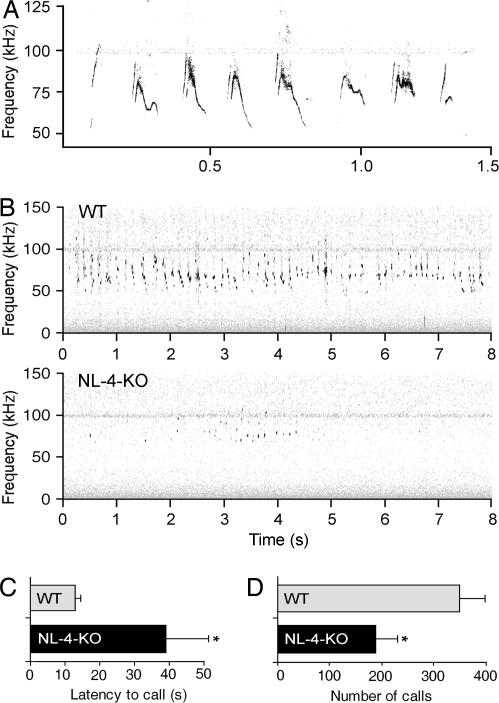Fig. 3.
Reduced ultrasound vocalization in NL-4-KO mice. Ultrasonic vocalizations of individual male WT and NL-4-KO mice were measured upon contact of the male test mouse with an unfamiliar female mouse in estrous. (A) Frequency spectrogram of typical ultrasonic vocalizations of a male WT mouse. (B) Frequency spectrograms of ultrasonic vocalizations of a male WT (Upper) and a male NL-4-KO (Lower) mouse, indicating the reduced number of vocalizations in NL-4-KOs. (C) Quantitative analysis of the latency between the time the female mouse was put into the arena of the male test mouse and the first ultrasonic call of the male in WT (n = 20) and NL-4-KO (n = 16) mice. Data are presented as mean ± SEM. The asterisk indicates a significant increase in latency in NL-4-KO mice (P = 0.03). (D) Quantitative analysis of the number of ultrasonic calls made by male WT (n = 20) and NL-4-KO (n = 16) mice during a 3-min session. Data are presented as mean ± SEM. The asterisk indicates a significant reduction in the number of calls made by NL-4-KO mice (P = 0.02).

